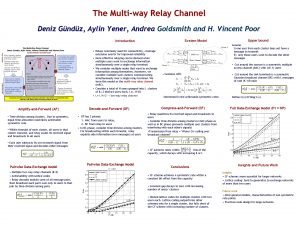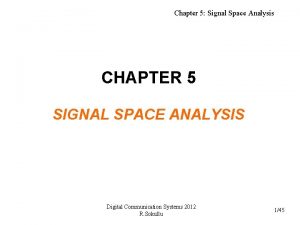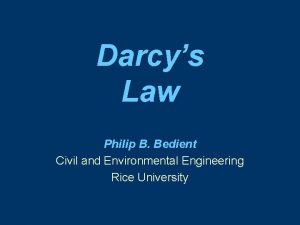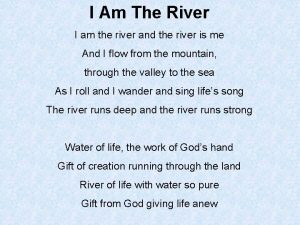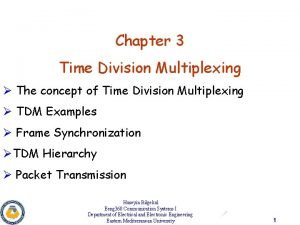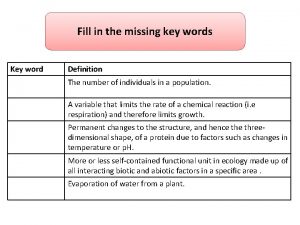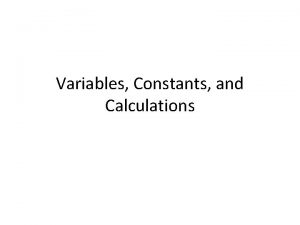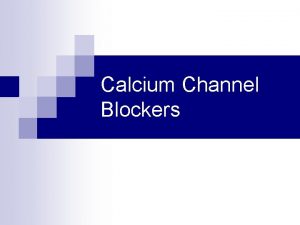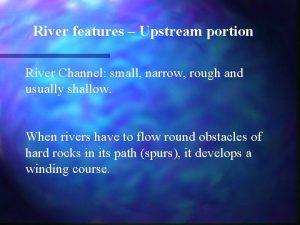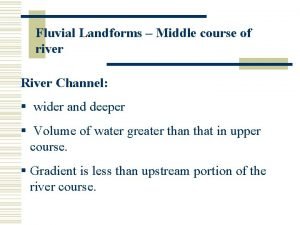RIVER CHANNEL CALCULATIONS Use this info to complete










- Slides: 10

RIVER CHANNEL CALCULATIONS • Use this info to complete page 5 and 6 of the latest notes packet you have been given • Answer all the questions using the info in this Power. Point

What is the Wetted Perimeter? The yellow line shows the wetted perimeter Wetted perimeter: the part of the bed and banks which is in contact with the water in the channel – how do you think hydrologists measure this?

The difference in the wetted perimeter of a river between the upper and Lower course of a river 5 meters This river has a higher wetted perimeter in comparison to its volume, which increases friction and reduces Velocity (upper course) Rocks and boulders 50 meters This river has a smaller wetted perimeter in comparison with its volume, because it has smooth banks, friction is reduced and this allows velocity to increase (middle/lower course) http: //www. youtube. com/watch? v=mg. Bqfc. MK 4 j. I

Wetted perimeter: the part of the bed and banks which is in contact with the water in the channel – how do you think hydrologists measure this? Calculating the wetted perimeter • This can be done using a weighted tape measure • If the stream has a rectangular shape, with no rocks and boulders in the channel like the one below • The wetted perimeter can be calculated by multiplying the depth by 2, and adding the width Wetted perimeter= Av. Depth 10 meters 10 x 2 = 20 20 + 20 = 40 meters Width 20 meters

Hydraulic radius (Rh): the ratio between the area of the cross-section of a stream and the length of its wetted perimeter – it measures channel efficiency • A square-shaped stream cross-section has a larger hydraulic radius than a shallow, rectangular-shaped stream cross section • The higher the hydraulic radius, the faster the river flow (Velocity) and the more efficient the river is, because there is less contact between the water in the channel and the bed and banks, so lower friction. (cross sectional)

Velocity & Discharge • Discharge is the amount of water that passes a given point on the stream every second- measured in cubic meters a second (cumecs) • Velocity is the speed of the water moving, measured as the distance traveled every second. • Speed = DistanceTime • Time how long it takes for a cork to travel 50 cm (using the meter stick/ tape measure)

Measuring discharge in Cumecs (m³/s ) • In order to calculate the discharge of a river in cumecs (cubic meters per second), you need to calculate the cross sectional area (m) (width x depth) and times this by the velocity (speed in meters a second) Width = 10 meters Speed of flow (velocity) = 10 meters a second Depth = 1. 5 meters 10 x 1. 5 = 15 (cross sectional area) Discharge in cumecs= 15 x 10 = 150 cumecs

Width = 12 meters 1) Speed of flow (velocity) = 11. 3 meters a second Av. Depth = 3 meters Width = 32 meters 2) Speed of flow (velocity) = 15. 6 meters a second Av. Depth = 4. 3 meters Width = 56 meters 3) Speed of flow (velocity) = 34 meters a second Av. Depth = 9. 6 meters Width = 2 meters 4) Av. Depth = 0. 8 meters Width = 23 meters 5) Speed of flow (velocity) = 8 meters a second Speed of flow (velocity) = 16 meters a second Av. Depth = 1. 7 meters Calculate the: 1) Cross sectional Area 2) Discharge in cumecs 3) The wetted perimeter (rectangular hypothetical streams) 4) Hydraulic radius of these hypothetical rivers (show your working out)

Width = 43. 7 meters 6) Speed of flow (velocity) = 2 meters a second Av. Depth = 7 meters Width = 32. 1 meters 7) Speed of flow (velocity) = 0. 2 meters a second Av. Depth = 5. 8 meters Width = 68 meters 8) Width = 2. 8 meters 9) Width = 23. 7 meters 10) Calculate the: 1) Cross sectional Speed of flow (velocity) = 2 meters a second Area Av. Depth = 11. 3 meters 2) Discharge in cumecs 3) The wetted Speed of flow (velocity) perimeter = 3. 0 meters a second (rectangular Av. Depth = 15. 9 meters hypothetical streams) 4) Hydraulic radius Speed of flow (velocity) of these hypothetical = 2. 8 meters a second rivers (show your Av. Depth = 2. 7 meters working out)

Data Analysis 1. Which is the most efficient stream? 2. Which stream has the narrowest channel? 3. Which stream has the largest wetted perimeter? 4. Which stream has the highest discharge in cumecs? 5. Which stream has the lowest discharge in cumecs? 6. Which stream has the deepest channel? 7. Which stream has the widest channel? 8. Which stream has the fastest velocity? Bonus: Which stream would be causing the most erosion and transporting the most load? Why?
 Structural steel connection calculations calculations
Structural steel connection calculations calculations Denz info channel
Denz info channel Multi channel retail definition
Multi channel retail definition Signal space analysis in digital communication
Signal space analysis in digital communication Jfet self bias configuration
Jfet self bias configuration A channel runs almost parallel to a river
A channel runs almost parallel to a river Green river (duwamish river tributary)
Green river (duwamish river tributary) I am the river and the river is me
I am the river and the river is me In tdm systems, channel separation is done with the use of
In tdm systems, channel separation is done with the use of Bacterial growth
Bacterial growth Simple predicate
Simple predicate

